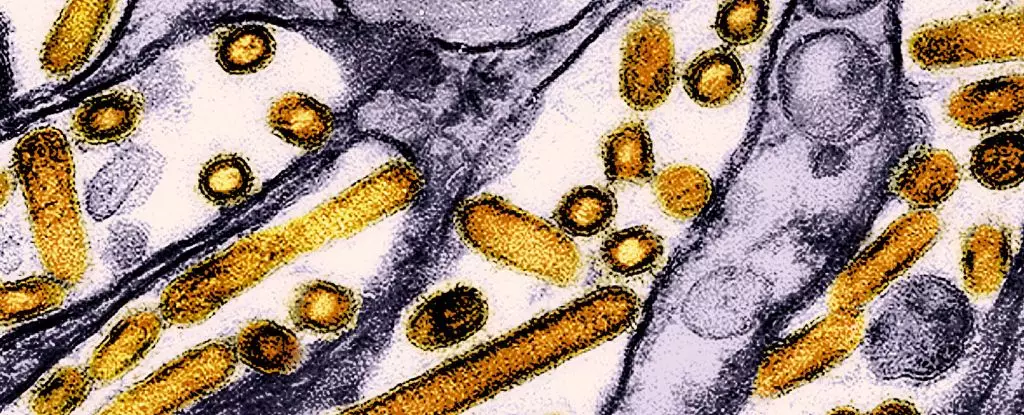In recent assessments, the detection of highly pathogenic avian influenza (HPAI) in humans has revealed alarming gaps in surveillance and preventive measures among those working closely with infected animals. A comprehensive study carried out on blood samples from 115 dairy workers across Michigan and Colorado has unveiled a noteworthy, yet concerning statistic: approximately 7% of these individuals carried antibodies indicative of the virulent H5N1 strain of bird flu. While this detection alone highlights the potential for a health crisis, it also showcases that many individuals who may have contracted the virus did not report significant illness.
Most individuals with antibodies in their system did not exhibit severe symptoms, suggesting that there may be a portion of the population that remains asymptomatic or experiences only mild illness. Commonly reported symptoms among those who recalled feeling unwell included fever, sore throat, and respiratory discomfort, which aligns with other influenza viruses. Notably, the study pointed out a troubling gap in proper safety measures: none of the infected dairy workers utilized the personal protective equipment (PPE) recommended for interacting with potentially infected animals. This lack of adherence to safety protocols raises concerns about both personal and public health.
As researchers delve deeper into the implications of these findings, they raise a red flag regarding the uncontrolled spread of the H5N1 virus. With cases emerging globally, such as a recent incident in Cambodia where a mutated strain led to multiple deaths, the potential for more aggressive and transmissible forms of the virus becomes a pressing concern. The Cambodian strain exhibited mutations linked to improved transmission capacities among mammals, emphasizing that without strict monitoring, bird flu can evolve into a more formidable threat to human health.
Compounding these worries, Canada has recently logged its first known case of human infection linked to a novel strain of bird flu that arose in the United States. The teenager affected by this mutated virus is in critical condition, stirring fears that contagion methods may be changing. While currently considered an isolated case, these incidents underscore the need for heightened awareness and response strategies.
The U.S. Centers for Disease Control and Prevention (CDC) has expressed a commitment to monitoring this situation closely. However, with over 400 dairy herds confirmed to be infected in 48 states, a proactive approach is paramount. Researchers stress the necessity for robust vigilance to not only contain existing outbreaks but also to prevent future infections among both dairy workers and the general public.
To address this challenge effectively, educational outreach targeting workers is crucial. This includes the dissemination of information on the risks posed by HPAI and the significance of adhering to PPE protocols. A culturally sensitive approach is important, particularly considering that many affected workers are Spanish speakers. Tailored communications can enhance understanding and compliance, ultimately mitigating the spread of the virus.
Authorities worldwide continue to advocate for public health measures, urging individuals to maintain hygiene when interacting with animals and to report clusters of sick or dead birds. Deteriorating health conditions in birds, such as drowsiness or coordination loss, should be monitored closely. These signs provide crucial early warnings for assessing potential contagions.
Since the emergence of H5N1, over 90 million domestic birds in the U.S. have been culled to control outbreaks, highlighting the severity of the situation in both agricultural and ecological contexts. The urgency for a human vaccine remains high, with researchers working diligently to counterbalance the viral threat.
While the current risk to public health may seem low, the underlying factors at play dictate a careful approach to monitoring and communication. The convergence of animal health and human health requires a holistic strategy that prepares for swift action while emphasizing the importance of vigilance and disease prevention, especially among those on the frontlines of agriculture. The future trajectory of H5N1 and its implications for human health remain uncertain, but awareness and proactive measures can chart a safer path ahead.

